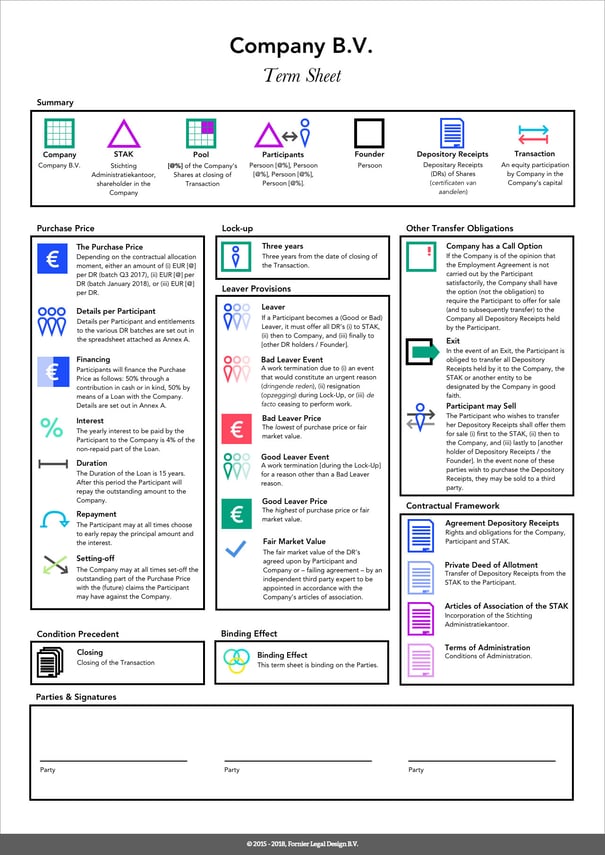Understanding Legal Design: A Key Transformation for the Legal Industry.

The legal market is in transformation. Never has there been such an expectation to find more innovative approaches to the delivery of legal services. Following ‘LegalTech’ and ‘NewLaw’, Legal Design creates another opportunity to transform and re-energise the legal industry.
What is Human-Centred Design?
Human-Centred Design is a problem-solving approach that involves people at the center of the development process. This method allows you to generate products and services that cater to the specific needs of your target audience, like their desires, challenges, and preferences. Consequently, you will construct more user-friendly products and services with greater customer satisfaction because your customers have already evaluated the solution and feel a stronger commitment.
What is Legal Design and why do I care?
Legal Design is the application of human-centred design to the world of law, to make legal systems and legal services more human-centred, usable, and satisfying. The concept was brought to the forefront of my mind by Maurits Fornier, a Dutch Litigation Lawyer and Legal Design entrepreneur who presented at ZegalCon 2018. Maurits highlighted the work that he and his firm have done in applying design principles to law. Rather than the usual approach to design in law (using design thinking to innovate processes and delivery models in law), generating a new thinking mindset (legal design thinking). Fornier uses visuals to support and strengthen the legal narrative of a case and help draft user-centric contracts that allow for a better understanding of the core legal issues. For example, he showed how key terms of a MOU could be tied to graphics, so a business stakeholder could quickly understand the business terms and mechanics without having to closely read multiple pages of dense legal drafting (see the image, Company B.V. Term Sheet).

As a non-lawyer, Maurits’ presentation and the benefits of Legal Design stuck with me. Its usefulness only further compounded by a client comment a few weeks later. The biggest pain-point for this client (General Counsel of a large MNC) was that, when using external counsel the legal documents they receive are not presentable to their senior business partners – they are text heavy documents, stuffed with complex legal jargon that do not serve the needs of users (in most cases, non-lawyers!).
Legal Design thinking is a user-centric approach. It pushes us to empower and prioritise the user. If lawyers are the central ‘architect’ of legal documents, it’s crucial that we collaborate with interdisciplinary teams (designers, psychologists, technologists etc.) throughout the process to help add value through applying a human-centered approach.
The Primary Advantages of Legal Design
-
Improved User ExperienceBy prioritising user needs, legal design thinking enables teams to focus on the "Actual" needs of the users, thus creating superior experiences for them.
-
Enhanced Clarity for Better EngagementLegal design makes law accessible to non-lawyer stakeholders and enhances their understanding of some legal terms and jargon.
-
Client Satisfaction (Increased Trust)Legal design aimed to create a user-centric service. Ensuring every stakeholder has the knowledge to access the information can create a more human-centered experience and reinforce confidence.
-
Save TimeLegal design can streamline the contracts and make those lacking legal expertise participate in the negotiations, facilitating the whole process.
-
Innovation OpportunitiesBy letting more stakeholders engage in the conversation, it encourages innovative thinking and creative solutions to legal contracts/problems.
The Future of Creating Greater Client Value - Empathetic Legal Design?!
Let me be clear, this isn’t about re-creating the wheel. Not all legal work must be re-designed with pleasing aesthetics and visuals that are easily digestible. But, the concept of Legal Design presents the industry with another opportunity to generate value in legal services rather than just manage risk. It leverages different perspectives and encourages empathy, creativity, transparency and team work – all whilst being another comprehensive way to change the industry and develop a competitive advantage through the delivery of greater client value.
In the ever-transforming legal world, service providers must be at the bleeding edge of innovation. As a non-lawyer with a passion for Legal Design (both in my capacity as a consumer and also as KorumLegal innovator) it’s great to be part of the team that provides solutions based on the needs of the client and the delivery of value. Legal Design might be part of your legal department and wider business’ value delivery needs. If it is, please get in contact! I see the Legal Design future, as bright!
Interested in Learning more about Legal Design?
KorumLegal offers design legal processes to deliver value and help legal departments kick-start innovation through legal design thinking and ideation workshops. To learn more, please contact KorumLegal.
Matt Roberts
Feb 29, 2024
Related Posts.
By: Lily Evans and Taina Miranda
LegalTech Soapbox: Enrich your daily operations with Legalboards
Featured in our LegalTech Soapbox Series this month is Legalboards. Born out of a large firm’s desire to become more efficient, Legalboards was created by co-founders Rafael and Taina Miranda to..
By: Lily Evans and Till Lembke
Featured in our GC Spotlight Series this month is Till Lembke, who is the Group General Counsel and Company Secretary at the Hongkong and Shanghai Hotels, Limited (HSH). He was seconded to HSH..
